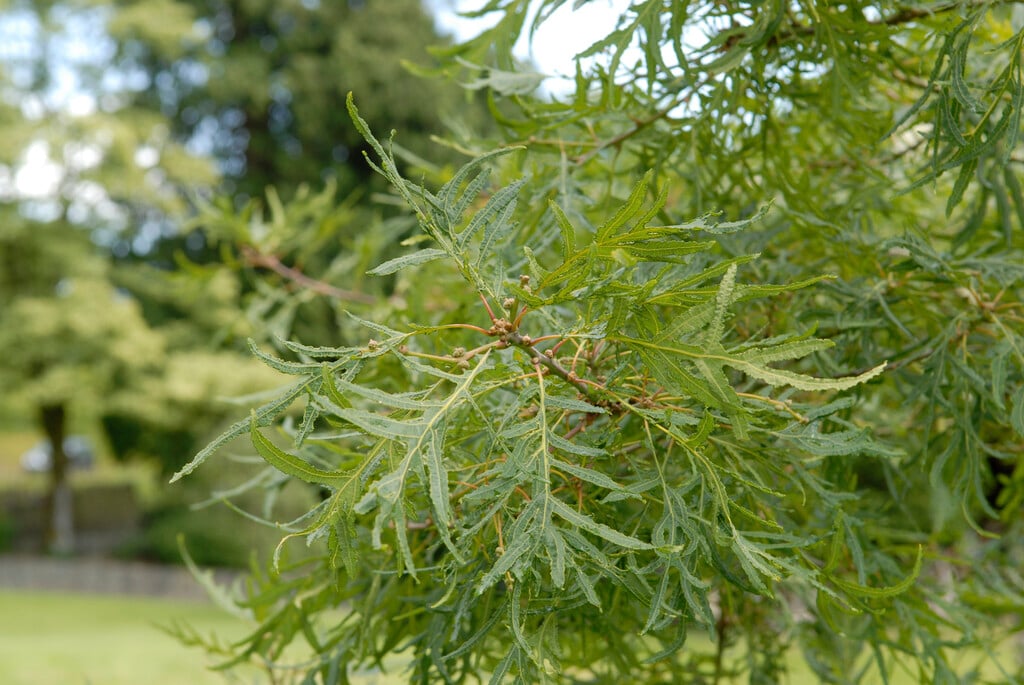Quercus robur 'Pectinata'
common oak 'Pectinata'
A small to medium-sized deciduous tree reaching perhaps 15m. The leaves are deeply dissected producing green, thick feather-shapes. They turn a dark yellow-brown in autumn.

Buy this plant
Size
Ultimate height
Higher than 12 metresTime to ultimate height
20–50 yearsUltimate spread
Wider than 8 metresGrowing conditions
Moisture
Moist but well–drainedpH
Acid, Alkaline, NeutralColour & scent
| Stem | Flower | Foliage | Fruit | |
| Spring | Green | |||
|---|---|---|---|---|
| Summer | Green | |||
| Autumn | Yellow Brown | |||
| Winter |
Position
- Full sun
Aspect
South–facing or West–facing or North–facing or East–facing
Exposure
Sheltered Hardiness
H6Botanical details
- Family
- Fagaceae
- Native to GB / Ireland
- No
- Foliage
- Deciduous
- Habit
- Spreading branched
- Potentially harmful
- Pets (dogs): Harmful if eaten - for further information and contact numbers regarding pets, see the HTA guide to potentially harmful plants
- Genus
Quercus can be deciduous or evergreen trees or shrubs, with entire, lobed or toothed leaves; flowers inconspicuous, followed by characteristic acorns; sometimes good autumn colour
- Name status
Accepted
How to grow
Cultivation
Suited to large gardens and parkland. Grow in any well-drained but moisture-retentive soil in good light. For more information see tree cultivation.
Propagation
Propagate by hardwood cuttings in autunm
Suggested planting locations and garden types
- Architectural
Pruning
Pests
May be susceptible to oak processionary moth, aphids, caterpillars, leaf-mining moths and oak gall wasps
Diseases
May be susceptible to powdery mildews and honey fungus
Get involved
The RHS is the UK’s gardening charity, helping people and plants to grow - nurturing a healthier, happier world, one person and one plant at a time.